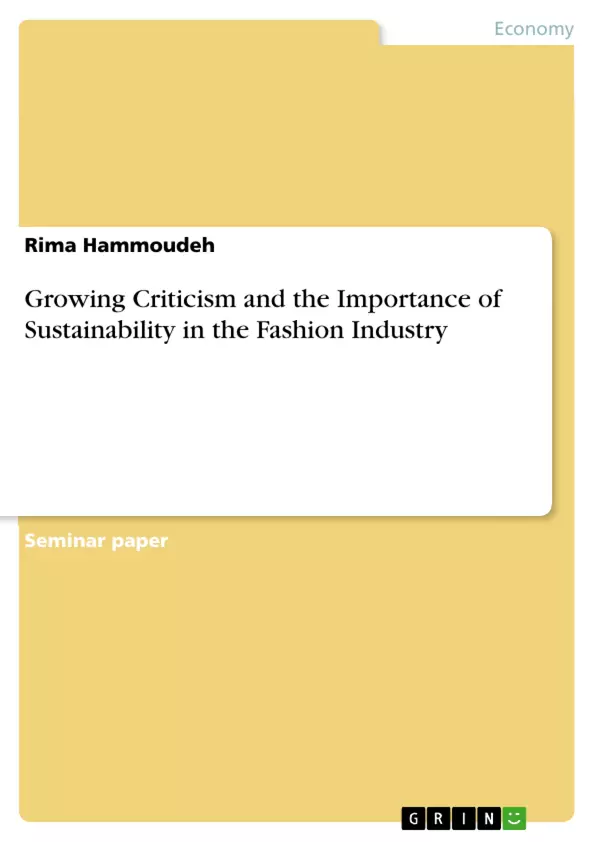The following work introduces the topic of the marketing mix and specifically analyzes ZARA’s marketing mix in order to obtain information about how ZARA’s marketing strategies are implemented in practice.
This analysis is performed by using the scientific approaches of McCarthy (4 P´s) and Kotler (4 C’s). Another part in this assignment is to identify if the chosen product or brand generates value for the society and the environment. After a short introduction into the topic, ZARA´s marketing mix is presented with a focus on the following factors; product (customer value), price (customer costs), place (customer convenience) and promotion (customer communication).
Chapter 3 refers to the topic promotion (customer communication) in chapter 2 and deals with the criticism of ZARA regarding sustainability and the respect of human rights in ZARA's production sites. The conclusion includes a personal, critical statement and is presented along with an outlook on future research in chapter 5.
Inhaltsverzeichnis (Table of Contents)
- Executive Summary
- Table of Contents
- List of Abbreviations
- List of Figures
- List of Tables
- 1. Introduction
- 2. ZARA's Marketing Mix
- 2.1. Product – Customer Value
- 2.2. Price Customer Costs
- 2.3. Place Customer Convenience
- 2.4. Promotion – Customer Communication
- 3. ZARA's Recent Image Problems and Strategies to solve them
- 3.1. Critics on ZARA
- 3.2. Today's Importance of Sustainably
- 3.3. ZARA's Image Strategies
- 4. Conclusion and Outlook
- List of Literature
- ITM Checklist
- Appendices
Zielsetzung und Themenschwerpunkte (Objectives and Key Themes)
This work aims to analyze ZARA's marketing mix, specifically focusing on how their strategies are implemented in practice, utilizing the scientific approaches of McCarthy (4 P's) and Kotler (4 C's). Additionally, it aims to determine if the chosen product or brand generates value for society and the environment.
- Marketing Mix of ZARA
- Application of McCarthy's 4 Ps and Kotler's 4 Cs
- Social and Environmental Value of ZARA
- Criticism of ZARA regarding Sustainability
- Strategies to address ZARA's image problems
Zusammenfassung der Kapitel (Chapter Summaries)
This work begins by introducing the topic of ZARA's marketing mix and its analysis based on McCarthy's 4 Ps and Kotler's 4 Cs. It then explores each element of the marketing mix, including product (customer value), price (customer costs), place (customer convenience), and promotion (customer communication). Chapter 3 focuses on ZARA's image problems related to sustainability and human rights in their production sites, highlighting the importance of sustainable practices in today's market. The conclusion, which is not included in this preview, will offer a personal, critical statement and an outlook on future research.
Schlüsselwörter (Keywords)
Key terms and concepts explored in this work include ZARA's marketing mix, McCarthy's 4 Ps, Kotler's 4 Cs, sustainability, corporate social responsibility (CSR), human rights, and image strategies.
- Citar trabajo
- Rima Hammoudeh (Autor), 2015, Growing Criticism and the Importance of Sustainability in the Fashion Industry, Múnich, GRIN Verlag, https://www.grin.com/document/346472



